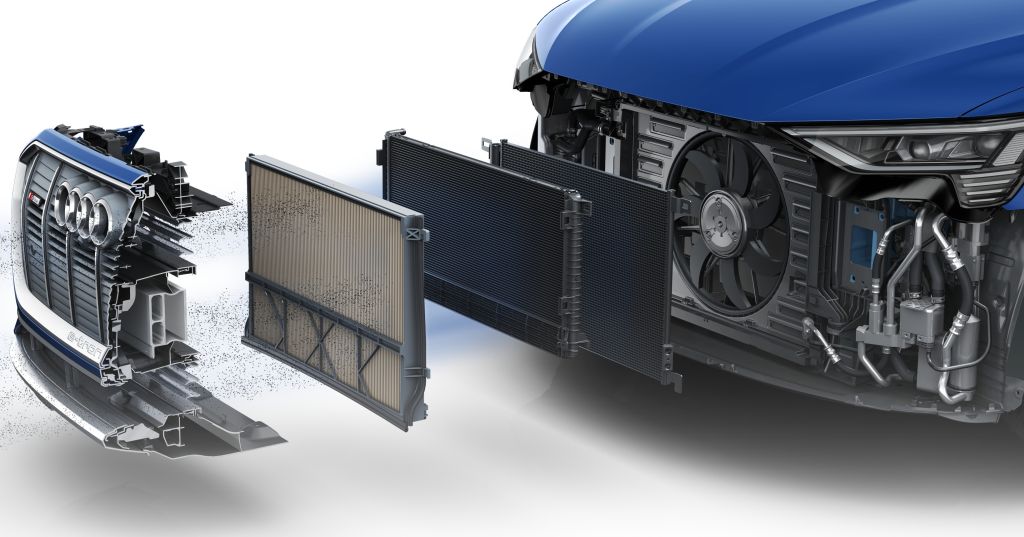Audi teams up with supplier to create urban purifier for EVs
By CARSIFU | 16 October 2022
LONDON: Audi is working with supplier MANN+HUMMEL to develop a particulate filter for electric cars that collects particulate matter from the surrounding area.
Both while driving and charging, it is to already help improve air quality in cities during a first pilot phase. The innovative technology was demonstrated at the Oct 13-14 Greentech Festival here.
Regardless of a vehicle’s drive system, 85% of fine dust in road traffic is caused by brake, tyre, or road abrasion. The smallest dust particles, hardly noticeable to the naked eye, are only a few micrometres in size with a diameter of only 10 micrometres and can therefore be easily inhaled.
In the past year, the World Health Organisation (WHO) has recommended significantly lower particulate matter limits than in the past but according to experts, it would be impossible to comply with these new values in many urban areas in Germany.
Together with the supplier MANN+HUMMEL, Audi has developed a filter for the front end that can collect particulate matter from its environment; it functions similarly to stationary systems that are already in use in some cities.
The mobile version ensures not only are the car’s own particulate emissions absorbed, such as those of an Audi e-tron, but those of other vehicles can be absorbed as well – right where they are generated.
The pilot project was launched in 2020 and will run for a period of four years.
Fabian Groh, Project Manager in Attachment System Development at AUDI AG, said: “This particulate filter is an example of our pursuit of innovation for everyone’s benefit and a successful collaboration with specialised suppliers. We are already doing a lot today on our own initiative. We anticipate it will also become a legal requirement in the future.”
The filter is integrated into the vehicle’s existing airflow in front of the radiator so that only a few modifications to the car are necessary, keeping costs down. The filter element is controlled via the switchable cooling air inlet and its mechanical function is comparable to that of a vacuum cleaner. By a similar principle, the fine dust particles remain stuck in the filter and the air can still flow through it.
Thus far, the filter has been used in Audi e-tron test vehicles. While driving, it passively filters by means of the movement of the vehicle; air flows through the filter system, which captures even the smallest particles.
Another possibility is filtering during stationary charging. A fan that is already built into every electric vehicle conveys ambient air through the radiator – the system takes advantage of this process and can thus actively filter the air flowing through it, using the fine dust filter, ensuring the smallest particles are absorbed, even when stationary. This is ideal for use in urban environments, where the particulate matter pollution is much higher than in rural areas.
The assessments conducted on the test vehicles were not only used to analyse the effectiveness of the filters, but also to determine whether the technology affects overall vehicle usage. After over 50,000km of endurance tests on the Audi e-tron, the answer was clear: the filters have no negative effect on the operation of the electric vehicle, including on hot summer days or during fast charging.
The system is so effective that, depending on the usage scenario, the Audi e-tron particles are completely filtered out in a highly polluted city such as Stuttgart. In polluted cities, fine dust emissions can be actively and passively absorbed by up to three vehicles in a typical customer scenario.
To make the system even more efficient, Audi is working with MANN+HUMMEL to connect with existing sensors such as weather stations, plus they plan to develop a display logic in the vehicle, allowing passengers to determine when the system is active and how much has already been filtered.
The filter is easy to maintain and must only be replaced when the regular service interval has been reached.
A lifecycle analysis of the entire filter system has shown that it will account for 14.9 kilograms of CO2 equivalents. Additionally, the filter itself consists of 15% recycled material and the entire system is 60% recycled.
Tags
Autos Audi
Reviews

First drive with the 2025 Hyundai Tuscon and Santa Fe: Seoul...

5.8
Kymco AK550 Premium: Smart easy rider

BYD Seal 6 Premium: Sweet deal, generous kit, sensible prici...

8.7
Mazda CX-80 2.5G PHEV AWD High Plus: Upmarket upgrade

Proton X50 Flagship: Tuned for success

6.6
Triumph Trident 660: Beautifully balanced package

8.4
Mercedes-AMG GLA 35 4Matic: Never a dull moment

Lamborghini Urus SE: Ultimate control
Videos

Free & Easy Media Test: Latest Proton X50 Flagship to Kuanta...

Zeekr Space Sunway City Video

Honda Civic Type R Ultimate Edition: Last 40 Units for Europ...
